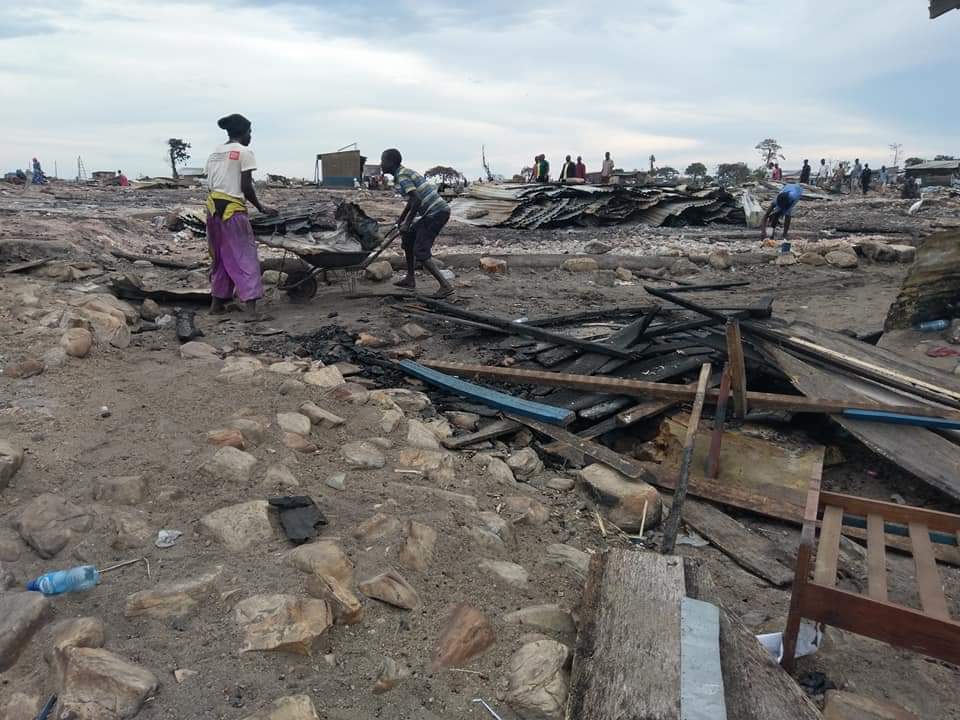Kimi Restoration Campaign

Kimi Restoration Campaign
Introduction
Kimi Island is a little Island in the Ugandan part of Victoria Lake. Having a surface area of less than 0.5 km² it is home to approximately 5500 inhabitants. Some boats provide some contact to the mainland, of which a ride takes 2–3 hours.
There are two camps on the island; Kimi Kachanga and Kimi Banga. The standard form of shelter on the island is characterized by a slum with shanty structures made of wood and iron sheets close to each other. The main source of income at the island is fishing, for the men, even though they spend most of their income on alcohol and sex, contributing to the rampant spread of HIV/AIDS. On the other hand, women engage in fish processing, food vending, bar waiting, prostitution and looking after their children.
The Tragedy
On top of those – already harsh – conditions, a fire destroyed almost every structure on the island on 15th October, 2017. The fire is said to have started in the wee hours of the night while the locals were having their bed rest. The fishing community on the island lost everything.
With the people of the community unable to have the luxury of insurance and little support from the government; there was no way of making up for the losses made including the lives and the livelihood of the struggling community. In addition to that, the only clinic on the island that was serving the entire community was not spared. This clinic was rendering services to expectant mothers as well as the HIV/AIDS community. Many island locals had borrowed loans from the banks to facilitate their businesses whose fate had then been lost to the ground. All that was left was hope that the government and other good Samaritans could run to their rescue.
Project Description
The Kimi Restoration Campaign aims to improve the overall livelihoods of the island inhabitants. The objectives are to
- promote renewable and more efficient energy solutions,
- improve hygiene,
- increase greenness of the environment (planting trees,…).
Various things will contribute to this. We aim to install a solar installation near the, currently empty, health clinic. These will power refrigerators needed for the storage of medicines and vaccines, enabling the island to provide more complete and faster accessible medical treatments. Additionally, we will distribute small autarkic solar lights to students and families. They will reduce the usage of unhealthy and dangerous petroleum lamps.
A second contribution vector to increasing the livelihoods on the island will be the provision of more restrooms. These will be placed near the health clinic and the schools. They will increase the overall hygiene.
Further aims are the provision of trees and the installation of a garden. For one do they increase the biodiversity on the island. Additionally, they will provide fruits and Vegetables, reducing the total dependence on the main land.
We also aim to interact with the government to provide a nurse stationed at the health clinic.
All these changes have to be implemented in a lasting way. This shall be ensured by introducing a structure of assigned personnel by island inhabitants.

